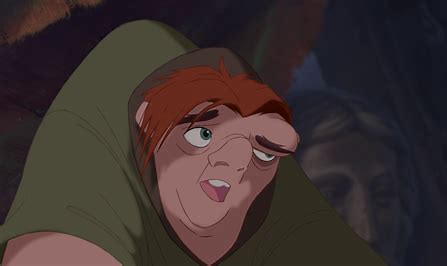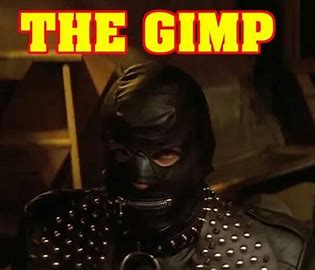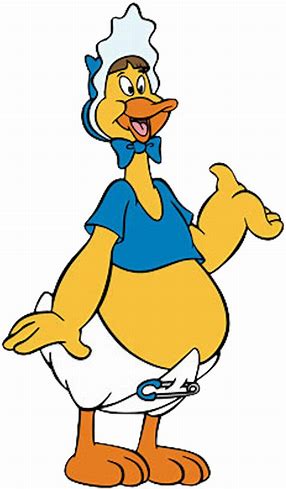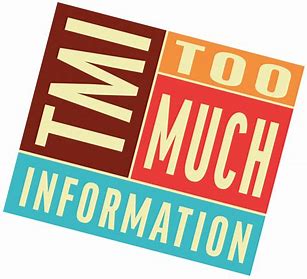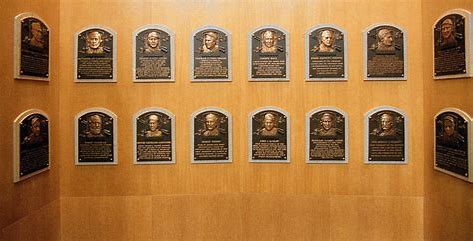Author: mikeljohnston1 (Page 5 of 269)
It was in an April post, 6-months ago, when I first wrote about “The Gimp” in reference to my sciatica. See Post #2512. I continue to struggle with the pain in my left leg, particularly, in the early mornings when I let the dogs out. I hobble down the sidewalk, regretting that moment when I have to bend over to pick up the poop. My wife claims that I haven’t been proactive enough in getting treatment, despite an Ultrasound, MRI, numerous chiropractor sessions, ice, heat, two steroid treatments, and purchasing a brace that puts pressure on the nerve. She’s just as frustrated as I am, awaiting the services of a pain doctor that rudely rescheduled an appointment last week after a month of finally getting that appointment. What else can I possibly do?
She just left to take the dogs to the park, while I write this post. By the time they return, my leg pain will have dulled, and I will make my way to the resort fitness center. Walking on the treadmill, with the support of the side rails, is the only approved exercise I can do over the next month, following prostrate surgery. I’m anxious to get back in shape but there have been too many obstacles in the way. At least, I’m no longer in diapers but have yet to see any improvement in my bladder control. It’s just one more frustration in my life.
I’ll take the dogs for their monthly grooming while my wife does her aquafit class, hurrying back for the IU football game against Washington. Ironically, it was a former IU quarterback, Michael Penix, Jr. that led the Huskies to the National Championship game last year. It could be our turn this year, although the undefeated season still has a long way to go. Without our starting quarterback today, it will be an even tougher challenge to remain in the playoff picture.
Last night, the Dodgers’ Freddie Freeman’s triple and walk-off grand slam to beat the Yankees in World Series game one was reminiscent of Kirk Gibson’s heroics back in 1988. Both limped triumphantly around the base path, despite their injuries. It once again reminded me of my morning sciatica struggles and Pulp Fiction’s “The Gimp.”
The numbers on my post somehow got out of line and so I spent several hours readjusting them. It’s just another indication that I’m getting old, right in line with too frequent mistaken directions and memory lapses. I’m now in the 2600 numbers rather than the incorrect 2500s, after starting this retirement blog at the end of 2016. My last day of work was December 30th of that year, so 2,853 days have passed. The goal was a post every day but, so far, I’ve missed 219 entries. I’ve definitely gotten a little lazier every year, but some of this is related to health issues and travel.
Categories like open-heart surgery, prostate issues, and sciatica were never even considered when this all started. The first mention of the word “sciatica” was in Post #2543 (June 14, 2024), having never run across the condition prior to this time. Now, it’s a daily problem. I did have concerns about an aneurism when this all started, but never envisioned open-heart surgery. I was also about half-way through what would turn out to be a 15-year running streak. I now worry about what monster is lurking behind the next unopened door and wonder which portal will unveil good fortune?
Travel and sports are still favorite subjects of mine, but sadly I haven’t felt much like writing humorous poetry. Pets have become a bigger part of my life, after taking on a feisty puppy. Baseball card collecting has kept me busy, but I need to find something more constructive to do with my spare time.
We continue to watch the Old Man series on Hulu, although I find it hard to believe his strength and resilience at that age. My job today is dusting, more in line with old man capabilities. Window washing is still beyond my skill level, so we’re bringing in the expert in a few weeks. Laundry continues to be my responsibility, with the exception of items that require ironing. Most of the lawn duties are handled by the HOA. It’s been 25-years since we’ve owned a lawnmower. Our pool guy is right down the street this morning, headed this way.
Another 2,000 plastic sleeves arrived in the mail yesterday, so I’ll be sorting baseball cards again today. I’m finished with my son’s boxes that I will keep here while he moves over to the Atlantic Coast temporarily. He’s renting his property here in our area, so this will give him an opportunity to rejoin his girls.
My wife has the day off from substitute teaching and will take our anxious pups to the park on their golf cart. I take them when she’s working, which has been four days a week of late. She also gets to go to her tap-dancing lesson while I hit the fitness center for a 2-mile walk on the treadmill. We’ll dine in again tonight and try to find something new to watch. Not much going on as I continue to recover from prostate surgery, at least my blog posts are no longer misnumbered.
“Diaperession” is what old men like me get when forced to wear diapers. It’s a humbling experience but not without a bit of humor. I made the “Baby Huey” reference in yesterday’s post (See # 2632) about my stylish gray Depends, hardly a fashion statement. I’ll try to be patient in the months ahead while recovering from prostate surgery. In my ways, I’m fortunate to have avoided cancer in each of these procedures this year.
I may need to add a TV to the bathroom and a toilet to my office chair. It would certainly save a lot of inconvenient trips down the hall. Right now, once an hour is the norm, but I did manage several two-to-three hour stretches overnight. It’s certainly an improvement from every five minutes that wore me out on Day 1. I’m supposed to drink lots of water, but the catch is that it accelerates the cycle.
I hope to get a little more sunshine today, but a dip in the pool could lead to infection, so I’m restricted to a comfortable chair. I’ve been very involved in two good books, “The Waiting” by Michael Connelly on my Kindle and the audiobook, “Persuader” by Lee Child. Both authors are favorites and have kept me distracted during this unpleasant time. The audiobook keeps me occupied while walking on the treadmill, the one form of exercise that is allowed for the next few weeks. I continue to struggle with the transition from running every day to finding new exercise outlets. A taped shoulder is an indication that I’ve yet to find a comfortable routine.
Walking is plagued by sciatica discomfort in my left leg that ranges from stubborn leg cramps to unbearable pain. I bought a stimulating device on Amazon from the manufacturer, BeActive+, that several friends have found effective. I was waiting for the appointment with a pain management doctor before doing anything, but they cancelled my appointment yesterday. I nearly cried out of frustration after already waiting more than three weeks to see him. The soonest they could get me in was another 9-days, so I’m desperate for relief. What it tells me is that there are many folks in this area battling pain – so I’m not alone.
This has been a constant battle since open-heart surgery in January, long before the very recent prostate procedure. Once I stopped running every day, my fitness level has suffered, and I battle weight gains. Every new routine that I’ve employed has been interrupted by discomfort, not that running was ever that enjoyable. However, a consistent exercise approach is important, and I’ve had to give up sit-ups and push-ups at the very foundation. It’s nagging leg pain, a sore foot, bicep strain, and surgeries that have constantly disrupted my active lifestyle, so no wonder I have “diaperession.”
It’s probably better that I focus on writing about sports today rather than bladder control and Depends. I will say that the prostate surgery went well, but I feel like Baby Huey in his signature plastic panties, primarily worn as a precaution. It will apparently be some time before my bladder returns to normal. In the meantime, I will begin a “pain management” program for my unrelated sciatica. Relief is on the way!
In an uncomfortable situation like this, I refer to the movie, “Planes, Trains, and Automobiles,” where Steve Martin wakes-up-side-by-side in the same motel room bed with John Candy….”Those aren’t pillows.” They break the awkwardness with the words: “See that Bears game last week?” I’ll use that same distraction in avoiding details about my current health issues.
Da Bears did win last week and had this weekend off. It was the remarkable Indiana football Hoosiers that made my day. Despite record-setting trips to the restroom, I was able to enjoy the stunning victory over Nebraska and a 7-0 start to the season. Baby Huey’s Ducks also claimed the top spot in this week’s polls after crushing helpless Purdue.
After a quick trip to the toilet, I’ll try to finish. Purdue is already looking forward to basketball, where they are expected to win the BIG, while I.U fans can’t wait for the Bucket Game and have a chance for a title and major Bowl appearance. Basketball is not a priority for once, even after a taste of hoops during Hoosier Hysteria on Friday night, all part of the Homecoming Hoopla! The exhibition game against formidable Tennessee is only a week away.
Aside from my love of the Hoosiers, Shohei Ohtani’s Dodgers have made it to the World Series with a ticket to play Aaron Judge’s Yankees. The two likely season MVP’s will get a chance to compete against each other head-to-head for a Championship. Ohtani’s move from the Angels have led to his very first postseason experience and a chance for the World Series MVP, the perfect cap to a sensational season.
IU’s QB Kurtis Rourke will miss next week’s Washington game with a thumb injury. Tayven Jackson replaced him in the second half of the Nebraska game and will be challenged with the task of maintaining the unblemished record. Michigan
State, Michigan, Ohio State, and Purdue loom ahead on the schedule, followed by a Bowl game yet to be determined. The Ducks and Hoosiers top the BIG TEN standings, with what was unimaginable years ago before league expansion and the portal. There’s a lot to look forward to despite the Baby Huey Blues!
My last post was anything but humorous, but I’m feeling better this afternoon, more soreness than pain. I had an inspector look over some of the minor storm damage, while still expecting the screen repairmen. It’s great to have a home that can withstand such powerful, turbulent winds. I’m reminded of the story of the “Big Bad Wolf,” instead it was Hurricane Milton who huffed and puffed, trying to blow our house down. Fortunately, it’s constructed of brick, concrete, and steel, not straw or sticks and other vulnerable materials. I’m honestly surprised when they put up a wood-framed structure in our area.
I’ve caught up on all the TV streaming series, now that we have power. This afternoon, I watched the 4th season, final episode, of Slow Horses on Apple, and last night it was Murders in the Building on Hulu. Tonight, should be the wrap-up of Bad Monkey, also on Apple. The new Bosch season starts soon on Netflix, one of the few channels that I currently don’t have access. Prime Video was just renewed, along with Max and Hulu, now part of the Disney Channel, who can live without that? I also have access to most of the sports channels, something my wife could live without, so I give her the Broadway Channel. Max may soon be traded for short-term Netflix renewal, trying to stay within some semblance of a budget.
I had a big outing last night in my neighbor’s Miata at Farlow’s, one of the few restaurants in nearby Englewood still functioning after the storm, knowing I would be fasting tonight, recovering from surgery over the weekend, and catching up on sleep after a 5:30a start. To add to the torture, I also scheduled flu and Covid shots. It will be a quiet weekend of sorting baseball cards, watching the MLB Playoffs, IU football, and the NFL. An Indy friend is also stopping by for a night. He was there for my vasectomy 40-years ago and just in time to wave goodbye to my prostrate. That’s what good friends are for! My wife is tired of all my moaning and groaning, so he can provide some comedic diversion. I’ll return the favor, as I did all those years ago, when he’s tired of making frequent bathroom trips. Too much information?
For fifteen consecutive years, without fail, I got up every single day and did a run without much complaint. Nowadays, I whine of pain and discomfort – not the same person. There is no more running, just limping while wishing I could turn back the clock. My wife is sick of it, insisting that I’m not being proactive enough in dealing with the doctors. They too, seem to ignore my pleas for relief.
My chiropractor is at least sympathetic, saying that I’m a good sport about it. With my pessimistic nature, I rarely hear that about myself anymore. He called my doctor, requesting an MRI of my lower spine, where the pain seems to originate, before it radiates through my left leg. Sometimes, it feels like a cramp in my thigh, while other times it can be debilitating. As the day goes on and it loosens with activity, the intensity diminishes, until I start to relax on the couch before bedtime. It’s been going on now since I stopped running, just before my open-heart surgery in mid-January. Ever since then, my body has resisted recovery by rendering my left leg stiff and useless.
The Ultrasound revealed no circulation problems, and the pelvic MRI showed arthritic deterioration in my lower spine, but the report suggested a second scan, as was initially recommended by the chiropractor. The doctor didn’t think so, consulted a neurologist, and they stubbornly proceeded with looking primarily at my pelvic area. Wrong – thinking like too many others that chiropractors are uneducated quacks!
The doctor did put me in a pain management program, but it’s been three additional weeks of pain, and I’ve yet to have gotten in to see him. The chiropractor’s steroid doctor, another futile side-step, provided some pills that gave only temporary relief, but didn’t solve the problem. So, I wait another week for my consultation, where he will probably suggest getting the second scan and I’ll have to struggle another two weeks waiting for insurance approval. I was simply trying to get that process moving forward before the consultation, but my doctor once again ignored me in favor of waiting for her man to see me. Easy for her to patiently recommend, while my pain persists!
My body is slowly falling apart, fulfilling the fear that this would happen if I stopped running. I have out-patient prostrate surgery tomorrow, a taped-up right shoulder from a bicep tendon strain, and an injury to my right heal from apparently overcompensating from the pain in my left leg. That leaves just my left arm that I’m typing with this morning. At least, I can express my frustrations though this blog. Thanks for listening, hopefully your hearing isn’t getting worse like mine!
Fosse got me up early this morning for one of her gross “goopy poopies,” likely because of the dead frog she ate last evening. Tastes like chicken, right Fosse! Tally was still in “good bed,” waiting for the sun to come up. On mornings like this I have to do two separate outings before my wife gets up to take over the responsibilities. I don’t know how she manages to sleep-in with Fosse anxiously staring at her. On occasion she’ll pick her up, so she can join her under the covers. Tally snoozes on!
My wife and Tally get up at the same time. Fosse is ready to go out again, but I make her “wait.” Tally’s business is good and firm. Once the two of us return and she hears me open the latch to come in, Fosse takes a running start and then slides down the hall on the smooth tile to greet us at the door.
Once out and about, there is absolutely nothing that Fosse misses once it lands on the floor, but at least she hasn’t tried to consume another of our TV remotes lately. Tally can’t see or hear if something drops right in front of her nose.
During dinner outside on the lanai last night, Fosse busied herself by chasing a small chameleon, “buffing” at the sandhill cranes, and sniffing out every crawling bug. Tally, on the other hands, practices what we call “petnosis,” staring longingly at us in hopes we’ll give her a bite of whatever we’re eating.
Tally usually only gets out of her bed if there’s a treat involved, while Fosse rarely sits still. Tally has to be coaxed to go outside, while Fosse can’t get enough of it. The only exception is when my wife tries to take a nap, Fosse immediately wants to cuddle. Her body heat then makes napping impossible. There is never a dull moment in our house these days. Fosse always wants to play fetch and gathers her toys around her to suggest that the games should immediately begin.
There are three times in every day when both pups want the same thing. The first is to ride on the golf cart to the dog park, where Fosse wrestles and Tally watches. The second is “yummy tummy,” when dinner is served. Fosse frantically gobbles her kibbles, as I prepare Tally’s wet and dry food combination, while tucking in the medication. There used to be a “kibble ball” for Tally’s dessert, but Fosse was too rough with the dispenser, so we now just mix it with her Cesar loaf and shut the door so Fosse can’t get to it. The third is “ham time,” that last treat before bed, a slice of turkey, not ham, these days in the interest of health. They both gather by the refrigerator in anticipation of this glorious moment.
The two dogs are very different, primarily because of their fourteen-year age gap. Fosse is just nine-months while Tally is approaching fifteen. Fosse’s role is to keep Tally young, along with us humans. I can hear Fosse down the hall, squeaking her “disco pig,” hoping that I’ll take the bait and play fetch. She also loves to tug on the rope of her “party balloon,” if she can entice me to engage her. “Mom” and “big sister” continue to play possum in our bedroom- dog differences!
It’s time to reflect on what all has happened this past week. Hurricane Milton has created lots of devastation in our area but has left behind two beautiful, calm, sunny days in its wake. To gaze up at the blue sky, you would think that nothing had happened but look across the street and down the block and the damage is obvious. Trees down or bent over, missing roof tiles, and lanai screens flapping in the wind are the norm. The neighbor across the street got an estimate of $4,000 for cage repairs. We were lucky to have escaped with minor problems. Is another storm on the way?
This is, of course, nothing compared to those who lost everything. Most of my neighbors can afford their losses, but I’m concerned, for example, about the family that owns the local baseball card shop. They just opened a second store in Sarasota and have significant roof damage to both locations. Hopefully, their inventory, that includes some of my collection, is safe. Fortunately, the anticipated flooding never happened, but water undoubtedly leaked into their properties from above. The windows were securely boarded-up, so it’s hard to tell what happened inside. They do intend to open today, but even a couple of missed sales days can cripple a small business like this. Most retail stores have been closed all week and many still don’t have power. I’m worried for them all!
Timing in life is everything! Our friend a few blocks down, just closed on their house two weeks ago, only to suffer some damage from this untimely storm. The card shop owners just celebrated a grand opening, that my wife and I attended, only to be welcomed with disaster. The eye hit landfall just 30 miles north of us in Sarasota, where I once owned property. I’m certainly glad I don’t today! I’ve been lucky in life, but others certainly haven’t!
We were without power for just 18-hours, most of that while we were sleeping, although a bit muggy and uncomfortable. Our house of steel, concrete, and high-impact glass can easily withstand the winds. It was quiet indoors until you opened the door to chaos. I can’t say that I’ve ever experienced winds so intense, able to rip the glasses off my face. During Hurricane Ian two years ago, we lost most of the food in our freezer, but we weren’t here when the power was out for days. I think the power surge also damaged the electronics in the refrigerator, that we just finally got properly repaired a few weeks ago. Milton, for some reason, did not play havoc with our electricity.
For us, everything is back to normal. We had “Date Night” at nearby Oak & Stone on Friday night. We then marveled over a History Channel special on the ancient city of Petra, a modern-day “Wonder of the World” that we toured a few years ago. I, of course, watched Saturday college football, while my wife spent time with our two pups, both of us relieved that we weren’t dealing with the hassles that others are facing in our immediate area. All in all, it’s been a normal, restful weekend full of reflection!
Continued from Post #2595.
If you haven’t guessed by now, I’m upset with the decisions made by the Hall of Fame Gods, so I consulted the rules, looking for justification:
BBWAA RULES FOR ELECTION
1. Authorization: By authorization of the Board of Directors of the National Baseball Hall of Fame and Museum, Inc., the Baseball Writers’ Association of America (BBWAA) is authorized to hold an election every year for the purpose of electing members to the National Baseball Hall of Fame from the ranks of retired baseball players.
2. Electors: Only active and honorary members of the Baseball Writers’ Association of America, who have been active baseball writers for at least ten (10) years, shall be eligible to vote. They must have been active as baseball writers and members of the Association for a period beginning at least ten (10) years prior to the date of election in which they are voting.
3. Eligible Candidates — Candidates to be eligible must meet the following requirements:
A. A baseball player must have been active as a player in the Major Leagues at some time during a period beginning fifteen (15) years before and ending five (5) years prior to election.
B. Player must have played in each of ten (10) Major League championship seasons, some part of which must have been within the period described in 3(A).
C. Player shall have ceased to be an active player in the Major Leagues at least five (5) calendar years preceding the election but may be otherwise connected with baseball.
D. In case of the death of an active player or a player who has been retired for less than five (5) full years, a candidate who is otherwise eligible shall be eligible in the next regular election held at least six (6) months after the date of death or after the end of the five (5) year period, whichever occurs first.
E. Any player on Baseball’s ineligible list shall not be an eligible candidate.
4. Method of Election:
A. BBWAA Screening Committee — A Screening Committee consisting of baseball writers will be appointed by the BBWAA. This Screening Committee shall consist of six members, with two members to be elected at each Annual Meeting for a three-year term. The duty of the Screening Committee shall be to prepare a ballot listing in alphabetical order eligible candidates who (1) received a vote on a minimum of five percent (5%) of the ballots cast in the preceding election or (2) are eligible for the first time and are nominated by any two of the six members of the BBWAA Screening Committee.
B. An elector will vote for no more than ten (10) eligible candidates deemed worthy of election. Write-in votes are not permitted.
C. Any candidate receiving votes on seventy-five percent (75%) of the ballots cast shall be elected to membership in the National Baseball Hall of Fame.
5. Voting: Voting shall be based upon the player’s record, playing ability, integrity, sportsmanship, character, and contributions to the team(s) on which the player played.
6. Automatic Elections: No automatic elections based on performances such as a batting average of .400 or more for one (1) year, pitching a perfect game or similar outstanding achievement shall be permitted.
7. Time of Election: The duly authorized representatives of the BBWAA shall prepare, date and mail ballots to each elector during the latter part of November. The elector shall sign and return the completed ballot no later than December 31. The vote shall then be tabulated by the duly authorized representatives of the BBWAA.
8. Certification of Election Results: The results of the election shall be certified by a representative of the Baseball Writers’ Association of America and an officer of the National Baseball Hall of Fame and Museum, Inc. The results shall be transmitted to the Commissioner of Baseball. The BBWAA and National Baseball Hall of Fame and Museum, Inc. shall jointly release the results for publication.
9. Amendments: The Board of Directors of the National Baseball Hall of Fame and Museum, Inc. reserves the right to revoke, alter or amend these rules at any time.
It’s really Rule #5 that determines the difference between the Hall of Fame and my newly proposed Hall of Shame. “Integrity, sportsmanship, character,” are the key words. They only want good people – not necessarily the best players. It’s a good example of why cheaters supposedly never prosper. The rule does specifically mention “contributions to the team(s) on which the player played” but not necessarily contributions to the game of baseball itself. All of these “Bad Boys of Baseball” made significant impact on the game and the teams they played for and therefore should be included in its history, even if it’s only a separate wing as I suggest. This is why the Hall of Shame addition should be established at Cooperstown. I guarantee it will be the most popular of all the displays.
As for the baseball writers who make this decision, it has been said that “Good writers borrow, better writers steal.” Maybe their practices should be as closely scrutinized as the players they vote against!
